Aerospace Hall of Fame: A-D
This is the first post of a three-part series (see the second post here) on great engineers, inventors, pioneers, aviators and pilots that have shaped the history of aviation. Each profile provides a little nugget of information about their key achievements and invites you to learn more about these pioneering men and women by clicking on the embedded links. While this is not a comprehensive list, I have tried to include a broad spectrum of names, including the classics we have all heard of, as well as some of the less well known, and in my opinion, underrated pioneering aviators. Enjoy!

Edwin Eugene “Buzz” Aldrin
Role: Pioneering US Astronaut
Born: January 20, 1930
Best known for: Apollo 11 Moon landing
Alma Mater: US Military Academy (1951) and MIT (1963).
“Buzz” Aldrin flew 66 combat missions in the Korean War, and after serving as test pilot entered the space program. Aldrin first flew into space on November 11, 1966, performing a record-breaking 5 hour space walk on the Gemini 12 mission. He is best known for piloting the lunar module for the historic July 20, 1969 Apollo 11 landing on the Moon, and became the second person to walk the Moon, spending a total of 2 hrs and 30 min on the surface.

Neil Alden Armstrong
Role: Pioneering US Astronaut
Born: August 5, 1930 Died: August 25, 2012
Best known for: First man on the Moon
Alma Mater: Purdue University (1955), University of Southern California (1970)
Neil Armstrong flew 78 combat missions in the Korean war, before joining NASA in 1955 as a research test pilot. He flew the famous X-15 research plane to the edge of space (~200,000 feet altitude), which laid the groundwork for the space program. Armstrong was the command pilot on Gemini 8 in March 1966, which performed the first successful docking of two spacecraft. This mission was then aborted after Armstrong needed to use his reentry fuel to prevent a dangerous spin of the aircraft—the first space emergency. He is best known for his spacecraft commander role on the Apollo 11 mission to the Moon, on which he became the first man to walk on the Moon. His phrase “That’s one small step for a man, one giant leap for mankind“, suitably captured the gravity of this moment and provided the inspiration for many engineers to come.

John Leland Atwood
Role: Aircraft Designer and Industrial Executive
Born: October 26, 1904 Died: March 5, 1999
Best known for: P-51 Mustang, F-100 fighter, X-15 rocket plane, Apollo program
Alma Mater: Hardin-Simmons University (1926) and University of Texas (1928)
Atwood was one of the heavyweights of the American aerospace industry for more than 40 years, and his career spanned arguably the most prolific period in aerospace engineering; from WWII fighter jets to the early beginnings of commercial flight and all the way through the space program. He started as a junior airplane designer in the Army Air Corps in 1928, and then moved to the Douglas Aircraft Company to work on the design of the DC-3 aircraft. After joining North American Aviation (NAA) in 1934 he quickly rose the ranks becoming assistant general manager (1938), vice president (1941) and was later elected as president (1948) and CEO (1960) of the company. Atwood has been called by many as the “chief engineer’s chief engineer” and he played a large role in turning NAA into the most prolific manufacturer of military aircraft to this day. At NAA, Atwood was one of the original designers of the agile P-51 Mustang, arguably one of the best designed fighter-bomber aircraft of WWII, featuring many new features such as low-drag laminar flow wing and new engine cooling arrangements, and remaining in service until the 1980s. Other aircraft designed by NAA under Atwood’s leadership include the T-6 Texan trainer, the B-25 Mitchell bomber, the F-86 Sabre jet used in the Korean War, the supersonic F-100 Super Sabre, the hypersonic X-15 and the XB-70 Valkyrie, one of the most advanced strategic bombers ever developed. After NAA merged with Rockwell Standard Co. in 1967, Atwood became the new president and CEO of Rockwell International, which produced many contributions to the space program such as the Apollo command and service modules, the second stage of the Saturn V lunar launch vehicle and the Rocketdyne F-1 and J-2 rocket engines of the Saturn V rocket. Even after retiring he continued to influence the design of the Space Shuttle and the Rockwell B-1 Lancer bomber.

Walter Beech
Role: Pioneering Aviator and Aircraft Designer
Born: January 30, 1891 Died: November 29, 1950
Best known for: Founder of Beech Aircraft Company with Olive Ann Beech
Walter Beech started early in his aviation career building a glider from a wrecked Curtiss biplane at the age of 14. Initially a US Army pilot during WWI, he soon joined the Swallow Airplane Company where he rose quickly from test pilot to general manager in 1924. Beech started the Travel Air Manufacturing Company with co-founders Clyde Cessna and Lloyd Stearman, and Travel Air Manufacturing became the world’s largest manufacturer of commercial mono- and biplanes. After Travel Air Manufacturing merged with the Curtiss-Wright Airplane Company, Beech started a new venture, the Beech Aircraft Company, with his wife Olive Ann Beech, in 1932. Many of their early designs were successful in aviation competitions (Bendix Trophy), setting new distance and speed records, and some, such as the Beechraft Model 17 Staggerwing Biplane (lower wing farther forward than upper wing to reduce wing interference), were years ahead of its time. During WWII, Beech focused entirely on defence, producing more than 7,000 military aircraft, which were widely used for training purposes. After WWII, Beech focused on new lightweight aircraft, which culminated in the “V”-tailed Beechcraft Bonanza of 1947, which is still being produced today and has been in production longer than any other airplane.
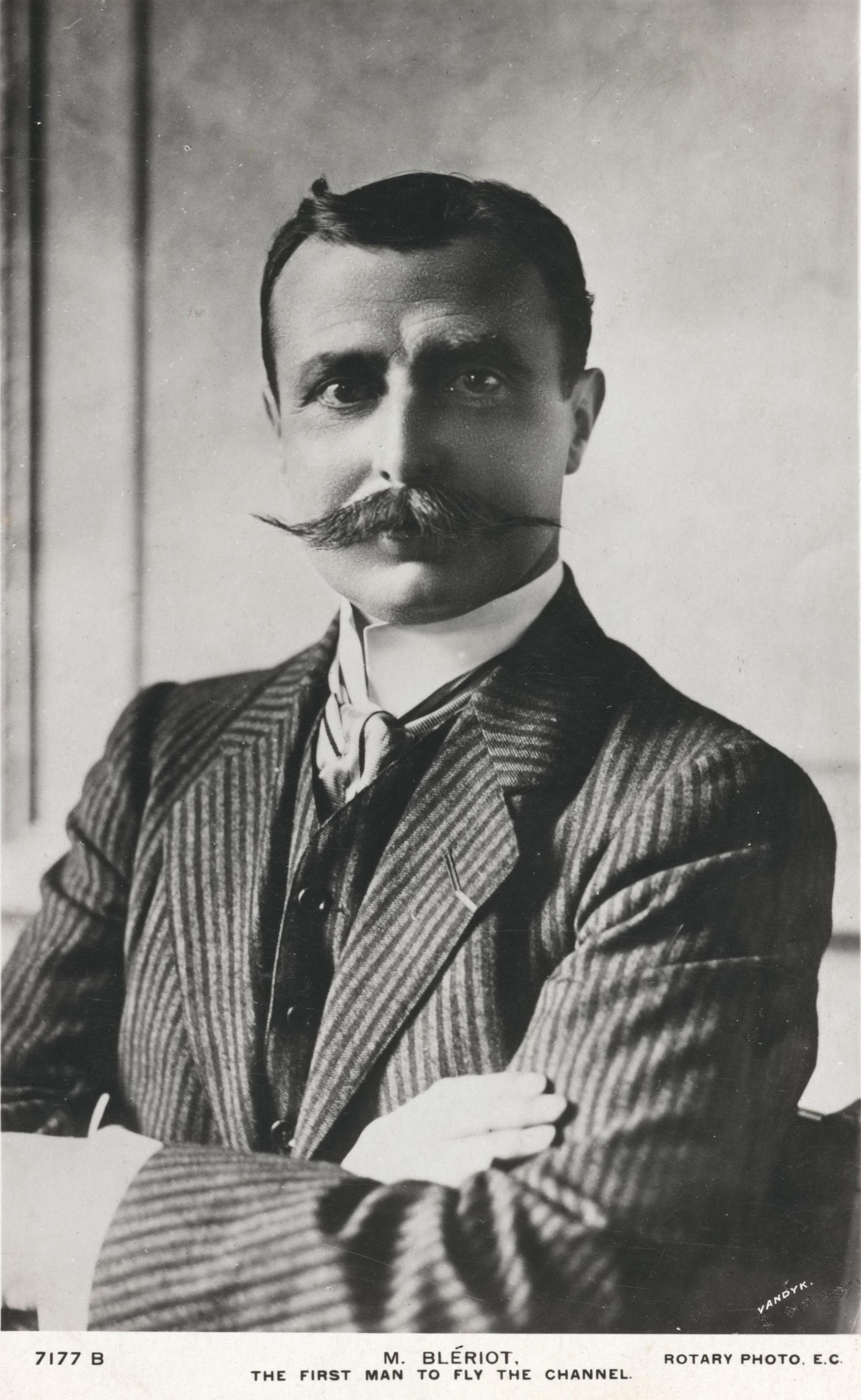
Louis Charles Joseph Blériot
Role: Pioneering Aviator
Born: July 1, 1872 Died: August 1, 1936
Best known for: Flight across the English Channel, first successful monoplane design
Alma Mater: Ecole Central Paris
Louis Blériot began his engineering career as a very profitable manufacturer of automobile headlamps, and used the proceeds of this business to build his first aircraft. Four years after the maiden flight of the Wright brothers, Blériot successfully flew the world’s first monoplane of his own design, the Blériot VII, in 1907. Blériot followed much of the same design process as the Wright brothers, learning to fly as he constructed his aircraft (canard configuration Blériot V and tandem-wing Blériot VI) and improving the design by trial and error. Blériot achieved world renown on July 25, 1909 by being the first to fly an aircraft across the English Channel in a heavier-than-air aircraft, his Blériot XI monoplane design. Although the flight from Les Barraques, France to Dover, England was only 22 miles across the open sea, the quickly changing weather conditions over the English Channel and poor reliability of aircraft at the time, highlighted his skill as a pilot and aircraft manufacturer. The gravity of this event is not be understated as it was the second big appraisal of aviation after the Wright brothers’ maiden flight. The English newspaper The Daily Express headlined their coverage of the event with “England is no longer an island”! During WWI, Blériot’s company Blériot Aéronautique and its associated venture Société Pour L’Aviation et ses Dérivés built the SPAD biplane fighters, one of the most successful fighters during the war, and flown by all of Allied Nations, and until his death, Blériot remained a paragon of aeronautical science and sport aviation.
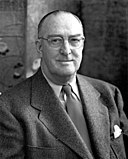
William Edward Boeing
Role: Aircraft Manufacturer
Born: October 1, 1881 Died: September 28, 1956
Best known for: Founder of Boeing Airplane Co.
Alma Mater: Sheffield Scientific School, Yale University (1903)
Like many aviators of the time, Boeing developed an interest in aviation as a hobby. After leaving Yale before graduating, Boeing initially worked in the lumber business in the Pacific Northwest, acquiring a considerable amount of land and shipping lumber to the East Coast via the Panama Canal. While learning to fly in 1909 at the Glenn L. Martin Flying School in Los Angeles, he became convinced of the superiority of aircraft as a future means of transportation, and purchased one of Martin’s planes. When this plane crashed, and replacement parts would not be available for months, Boeing and his friend George Conrad Westervelt, decided to build their own plane. Together, Boeing and Westervelt incorporated the Pacific Aero Products Corporation and built the Boeing Model 1. Only a month later, when the USA entered WWI, Boeing changed the name to the Boeing Airplane Company, the forerunner of today’s industrial giant. Initial government contracts for the new company included 50 trainer airplanes for the Navy and 200 pursuit planes for the Army Air Services. At the end of the war, Boeing started flying air mail services between Vancouver, BC and Seattle, which started the commercial operations of the Boeing business. By the end of the 1930s, the Boeing Company was already one of the largest U.S. aircraft manufacturers, and was also flying passengers across the country on regular schedules, which eventually morphed into United Airlines. For this dual accomplishment of manufacturing and transportation, Boeing was awarded the prestigious Daniel Guggenheim Medal in 1934.

Karel Jan Bossart
Role: Rocket Scientist
Born: February 9, 1904 Died: August 3, 1975
Best known for: Atlas ICBM
Alma Mater: Université libre de Buxelles (1924)
Karel Bossart must be considered as one of the leading rocket scientists and designers of all time, but because most of his work was conducted for the US Air Force, it remains classified and relatively little known. Even to this day, Bossart stands in the shadow of his contemporate, Wernher von Braun (see next entry), even though Bossart’s rocket designs were by no means inferior. After graduating with a degree in Mining Engineering in Belgium, Bossart won a scholarship to MIT to study aeronautical engineering, and then worked in the USA for the rest of his life. In 1945, as chief structural engineer at Convair, he proposed a missile with an 8000 km range which could replace the strategic bombers which had been operating so successfully (or detrimentally) during WWII. The US Air Force was originally sceptical of his proposal but granted him a small limited contract, which was then mothballed in 1947, and revived in 1951 as the Cold War began to escalate and it became clear that the Soviets were progressing with their own ICBM program. Bossart’s rockets, which became to be known as the Atlas series, used an internally pressurised monocoque shell design, a novel fuel system, gimbaled engines for directional control, and a separable nose cone. Ultimately, the Atlas never became effective as an ICBM but proved to be one of the most reliable launch vehicles during the space race, especially the USA’s first manned spaceflight program, Project Mercury. The Atlas rocket was also used to launch the first communications satellite, the first US manned orbital mission, to launch the Mariner probes to Mars and Venus, and the Pioneer 10 and 11 probes to Jupiter and Saturn.

Wernher von Braun
Role: Rocket Scientist
Born: March 23, 1912 Died: June 16, 1977
Best known for: V-2 missile, Redstone rocket and Saturn V rocket
Alma Mater: Technical University of Berlin (1924)
Wernher von Braun is one of the best known figures of rocket development in Nazi Germany, and one of the fathers of rocket technology and space science in the USA. Indeed, von Braun had one of the best mentors you could think of—Professor Hermann Oberth. Oberth was one of the founding fathers of rocketry, whose doctoral dissertation on rocket science in 1922 had been rejected as too “utopian”, but it was indeed one of the first documents to use formal scientific principles to the idea of building spaceships. It was this space pioneer that Wernher von Braun assisted during his doctoral studies at the Technical University of Berlin, and to whom he later accredited with much of his success as a rocket engineer. Upon graduating, von Braun initially worked on rocket development with the German Ordinance Department, which managed to launch a series of liquid-fueled rockets known as the Aggregat rockets. The successful launch of the inertial-guided A-3 rocket in 1937 led to the founding of the rocket centre at Peenemünde, where during WWII, von Braun redesigned the A-3 into the A-4 variant, more famously known as the long-range V-2 ballistic missile. Shortly after the development of the A-4 rocket, von Braun was promoted to full Professor, an exceptional status for anyone at the age of 31!
After WWII, von Braun’s scientific credentials earned him special immigration status to the USA under Operation Paperclip, alongside the V-2 technology, and he further developed the V-2 at White Sands Proving Ground, New Mexico. In 1950, von Braun and his team were moved to Huntsville, Alabama to develop the Redstone rocket, a direct descendant of the V-2 and dubbed the “Army’s Workhorse” because it was used for the first live nuclear ballistic missile tests and was also used to launch the first American astronaut, Alan Shepard, into sub-orbit in 1961. After Redstone, von Braun was promoted to director of the Development Operations Division in Huntsville, Alabama (1956), and he and his team designed the Jupiter-C rocket. This rocket launched the West’s first satellite, the Explorer 1, into orbit in 1958, officially signalling the USA’s entry into the Space Race. In 1960, von Braun’s team moved again to the newly created NASA Marshall Flight Test Centre in Huntsville, where von Braun became the centre’s first director. Again under von Braun’s leadership, his team developed the mighty Saturn rockets that launched Buzz Aldrin, Neil Armstrong and Co (see above). to the Moon. In 1970, von Braun became Deputy Associate Administrator at NASA headquarters and was awarded the National Medal of Science in 1975.

Louis Charles Breguet
Role: Aviation Pioneer and Industrialist
Born: January 2, 1880 Died: May 4, 1955
Best known for: Breguet range equation, Breguet 14 and 19, Air France
Louis Breguet was one of the first aviation pioneers that attempted to place the construction of aircraft on a more rigorous scientific footing. This was no surprise given that Breguet was born into a family with a keen interest and tradition in engineering and science (he was the grandson of the famous horologist Abraham-Louis Breguet). In 1905, Breguet built his own version of a laboratory wind tunnel, which he used to study the effects of different airflows on wings and started to built a gyroplane (forerunner of the helicopter) under the guidance of Charles Richet. In 1907, Breguet’s gyroplane achieved the first flight of a vertical-flight aircraft, even though only to a height of 2 ft. Breguet was one of the first to appreciate that experimentation and testing during the design and manufacturing phase is critical for reliability. Indeed, his first biplane, the Breguet Type 1, built in 1909 proved to be of high quality with outstanding performance characteristics, setting multiple speed records but also defining the accepted quality standards for many years to come. As was the case for many early aviation pioneers, WWI proved to be a litmus test. The companies that received Army contracts survived, and the others largely fail by the wayside. Breguet’s company produced around 7,800 Breguet 14 reconnaissance aircraft for the Allied war effort, and helped to establish airplanes as a new military weapon. The Breguet 14 was one of the first aircraft to use metal construction, in this case aluminium structural members, making the airframe lighter than a wooden one for the same strength. This imparted the Breguet 14 with superior agility and speed, but the metal construction also helped the aircraft to sustain more damage. After the War, the Breguet 19 became famous for flying long distances over land and sea, and on the back of this reputation, Breguet established the Compagnie des messageries aériennes in 1919, which today has morphed into Air France.
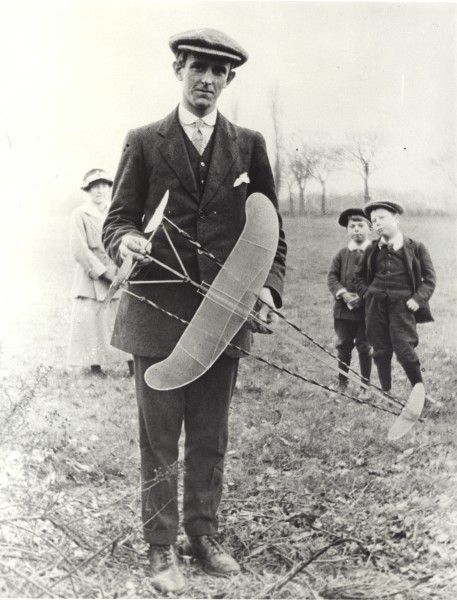
Sir Sydney Camm
Role: Aircraft Designer
Born: August 5, 1893 Died: March 12, 1966
Best known for: Hawker Hurricane, Hawker Hunter and Hawker Siddeley P.1127
Sydney Camm is one of the most famous British airplane designers of the WWII and post-WWII periods. He is best remembered for this work for the Hawker Company, especially on the Hawker Hurricane fighter, which bore the brunt of the German onslaught during the Battle of Britain, and the first vertical takeoff and landing aircraft, the Hawker Siddeley P.1127. Camm and his brothers developed an early interest in aviation, building model airplanes and selling them to the students at nearby Eton College. In 1923, Camm joined the Hawker Aircraft Company (later Hawker Siddeley) as a draughtsman, but the success of his first design, the Cygnet, led to his quick promotion to chief designer in 1925. Camm’s legacy is manifest in the fact that he is responsible for 52 different aircraft designs, of which 26,000 were manufactured, and at one point 84% of the RAF aircraft in service were Camm designs! Camm was a difficult man to work for, ridiculing engineers that made foolish mistakes. Crucially for innovation, however, he rarely scolded designers for new design or manufacturing ideas, and had no respect for engineers without new ideas or indeterminate solutions. His WWII designs, the Hawker Hurricane, Hawker Typhoon and Hawker Tempest, are now iconic classics. Camm understood incredibly well how to incorporate jet engines, which were blossoming after WWII, into streamlined and agile aircraft designs. His most significant design after WWII is probably the Hawker Hunter which proved to be one of the most successful military aircraft ever designed. His final crowning achievement is the P.1127, which was the forerunner of the Hawker Siddeley Harrier. The Harrier is well known for its vertical takeoff and landing capabilities which required a synthesis of many new technologies such as vectored thrust engines and reaction control systems.
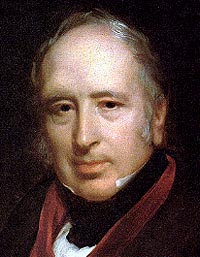
Sir George Cayley
Role: Flight Scientist and Engineer
Born: December 27, 1773 Died: December 15, 1857
Best known for: First successful human glider, established the four aerodynamic forces, invented the basis for modern aircraft design
Even though Leonardo da Vinci is known for his early theoretical sketches about flying machines, Sir George Cayley must be considered as the true founding father and first scientific aerial investigator. Cayley is one of the most important people in the history of aviation, as he was the first person to understand the underlying principles of flight. Cayley was a genius who studied all aspects of flight in a rigorous scientific manner—dissecting bird wings, testing different airfoils, devising and testing his theories about flight, and ultimately building his own gliders. He maintained a meticulous record of all of his experiments, which then proved invaluable for the next generation of aviation pioneers. In 1799 he published the concept underlying any modern aircraft as a fixed-wing machine with separate mechanisms for lift, propulsion, control. By observing birds flying he correctly inferred that cambered (arched) wing profiles were a means of providing lift, and that flying could be controlled by wing twisting. Cayley flew model gliders based on these insights, and later developed full scale versions to be flown as kites. Sometime around 1848, Cayley cajoled a little boy to sit in a glider, who consequently became the first person in history to fly. In 1853, Cayley launched a glider off his rooftop, with supposedly, one of his employees (coachman or butler) as a passenger. A true polymath, Cayley worked on all aspects of flight, establishing key insights about the relationship of wing area, camber and lift; highlighting the four basic aerodynamic forces lift, drag, weight and thrust; developing means to determine the centre of pressure of an airfoil; highlighting the superiority of streamlined (teardrop) shapes and the need for vertical and horizontal tail planes for flight stability; developing the concept of wheels as an undercarriage; designing wire-braced biplane structures to carry loads; and correctly predicting that sustained flight would not be possible until a lightweight engine was developed to provide the necessary thrust. Essentially, Cayley single-handedly figured out or highlighted the key principles of flying machines, and all aviation pioneers and engineers to come, inevitably stand on his shoulders.
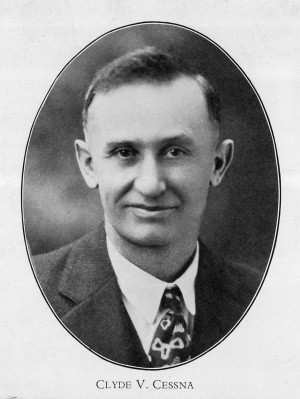
Clyde Vernon Cessna
Role: Aircraft Designer and Industrialist
Born: December 5, 1879 Died: November 20, 1954
Best known for: Cessna Aircraft Corporation
Clyde Cessna found his passion for aviation at the relatively mature age of 31 (1910), while attending an aerial exhibition in Kansas. For the rest of his life, Cessna dedicated himself to aviation, designing and constructing his own lightweight aircraft and becoming a competent pilot. His first design of 1911, a monoplane nicknamed the “Silverwing”, was constructed from linen and spruce and can be considered as a variant of the Bleriot XI from France. Cessna crashed this airplane 12 times, until he finally managed to get it off the ground, completing a 5-mile flight to return back at his initial point of departure. In 1925, he founded the Travel Air Manufacturing Company alongside Walter Beech and Lloyd Stearman, and with Cessna as its president, the company became one of the leading U.S. aircraft manufacturers, producing a line of internationally famous aircraft that set speed and distance records. After disputes with his partners over the merits of monoplane versus biplane design, Cessna left the company to form his own company, the Cessna Aircraft Corporation. Even though Cessna designed successful aircraft such as the Cessna AW, CW-6, DC-6 and the CR-series of aircraft that set world speed records, the Great Depression caused a dramatic drop in sales, ultimately leading to a bankruptcy filing and the complete closure of the company by 1931. In 1934, Cessna re-opened the business but soon sold his interest to his cousins, Dwane and Dwight Wallace, who would turn the business into a global success. To this day, Cessna aircraft are the predominant training aircraft that are used to introduce the pleasure of flying to many people around the globe.

Octave Alexandre Chanute
Role: Aviation Historian and Experimentalist
Born: February 18, 1832 Died: November 23, 1910
Best known for: His book “Progress in Flying Machines”
Octave Chanute was a self-taught engineer that began his first career in railroad construction at the Hudson River Railroad. Over the years, he became especially known for his novel designs and complex constructions of railroad bridges (e.g. Hannibal bridge) and terminals. Chanute also invented a method for pressure-treating wooden railroad ties with antiseptic to prolong their service life. At the age of 51, instead of retiring, Chanute started his second career in aviation. His first step was to assemble a massive compendium of all known data on the science of flight up to this point, in order to highlight shortcomings and publicise the successes and failures of pioneers. This publication, Progress in Flying Machines, was the first synthesis of the history of flight and therefore earns him the title of first aviation historian. Chanute also became a close friend and advisor of many experimentalists and pioneers of the time, such as Lilienthal, Bleriot, and the Wright brothers, with whom he struck up an especially close relationship. At the same time, Chanute conducted gliding experiments throughout the 1890s, filling some of the holes in the available data on aircraft stability and the strength of materials. His close familiarity with box structures in bridge construction, naturally led him to design the classic strut and wire-braced biplane construction, widely used until Hugo Junkers all-metal cantilever monoplane design without external bracing introduced during WWI. Chanute shared his knowledge freely with everyone that asked, and he expected others to do exactly the same. This approach led to some friction with the Wright brothers later on with regard to their attempts to patent the Wright Flyer based on the concept of wing warping for steering and stability.
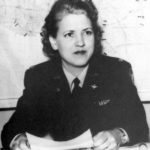
Jacqueline Cochran
Role: Aviation Pioneer and Racing Pilot
Born: May 11, 1906 Died: August 9, 1980
Best known for: Women’s Auxiliary Army Corps, Women Airforce Service Pilots, record-setting pilot
After a friend offered Jacqueline Cochran a ride in his airplane, she became enthused with flying in her twenties and learned to fly in a mere three weeks. Soon she started to fly solo and to enter in speed flying competitions. In 1937, she was the only woman to enter the prestigious Bendix Trophy, and after winning the Bendix in 1938 and setting transcontinental speed and altitude records, she became known as one of the best pilots in the US and the undisputed “Speed Queen”. Cochran also became the first woman to fly a bomber across the Atlantic, win five Harmon Trophies (awarded to the year’s most outstanding aviator/aviatrix), and at the time of her death held more speed, distance and altitude records than anyone else in history. In aviation history, Cochran is however best known for her public service and initiative in creating the Women Airforce Service Pilots (WASP) during WWII, envisioning female pilots to help in domestic and noncombat aviation jobs, in order to free more male pilots for combat service. As director of WASP, Cochran was responsible for training female pilots, and for this wartime service she received the Distinguished Service Medal in 1945.

Claude Honoré Désiré Dornier
Role: Aircraft Designer and Industrialist
Born: May 14, 1884 Died: December 5, 1969
Best known for: Dornier Do X flying boat and all-metal monocoque construction
Alma mater: Technical University of Munich (1907)
After graduating from the Technical University of Munich in 1907, Dornier first worked as a structural engineer at Nagel Engineering Works. In 1910, he joined the famous Luftschiffbau Zeppelin company, where he was quickly recognised by Ferdinand von Zeppelin himself for his outstanding technical abilities. He was appointed von Zeppellin’s personal scientific advisor, and in this role began to improve the design of lightweight metal sections. As such, he is directly responsible for the first all-metal stressed skin (monocoque) aircraft designs, such as the biplane cantilever-wing Zeppelin-Lindau D.I, which was the first aircraft of this type to go into production. Unable to fully convince the Zeppelin officials of the merits of diversification into aircraft, in 1914 he set-up his own aircraft company with his brother, the Dornier Flugzeugwerke. After WWI, the Treaty of Versailles forbade any construction of aircraft in Germany, such that foreign companies, such as CMASA and Piaggio in Italy, license-built Dornier designs. In the 1920s, Dornier designed the largest, heaviest and most powerful flying boat of the time, the Do X, which set a new record in the number of passengers carried (150), unbroken for 20 years, and flew from Germany to New York in 1930. During WWII, the Luftwaffe used the Dornier Do 17 and Do 217 as bomber and reconnaissance aircraft. Dornier also developed the fastest piston-engined fighter of WWII, the Do 335, which was introduced too late to enter combat. Following WWII, the Dornier business was not allowed to produce any more airplanes, so that Dornier moved to Switzerland, where he consulted in aeronautical engineering.
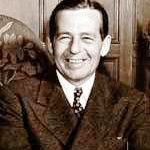
Donald Wills Douglas
Role: Aerospace Engineer and Industrialist
Born: April 6, 1892 Died: February 1, 1981
Best known for: Douglas Aircraft Company, DC-3 passenger plane
Alma mater: MIT (1914)
Donald Douglas was the first official aeronautical student at MIT. He started his professional career at the Glenn L. Martin Company. Alongside David Davis he built the Cloudster biplane, which became the only product of the Davis-Douglas Company, and which had been designed to make the first non-stop flight across the US. Even though the plane failed to achieve this feat, it was the first aircraft to lift more payload than it’s own dry mass. Following this failure, Davis lost interest and Douglas founded his own firm in California in 1921, the Douglas Aircraft Company. Douglas led the design and production of the first airplanes to circumnavigate the globe, and Douglas Aircraft produced a number of civil and military aircraft, most notably, the advanced passenger plane, the DC-1. Under Douglas’s leadership, the Douglas Aircraft Company became of the leaders in the commercial aircraft industry, and fought a multi-decade struggle for supremacy with the Boeing company. The now legendary DC-3 airliner, and its popular military derivative the C-47 Skytrain of WWII, established Douglas Aircraft as the temporary winner in this competition. However, with the continuing series of planes, the DC-4, DC-6, DC-7 and the DC-8 and DC-10 jets, Douglas started to fall behind, but nevertheless can take the credit for introducing aviation to the first generation of jet-setting customers.

Hugh Latimer Dryden
Role: Aeronautical Scientist and Cicil Servant
Born: July 2, 1898 Died: December 2, 1965
Best known for: NASA Deputy Director
Alma mater: Johns Hopkins University (1916, 1919)
Hugh Dryden was awarded a M.S. and a PhD in physics from Johns Hopkins University. He completed his PhD while working at the National Bureau of Standards at the age of 20, the youngest ever to receive a PhD from Johns Hopkins. Upon this achievement, he was appointed the director of the newly founded Aerodynamics Division at the National Bureau of Standards. His long research career in aerospace engineering led to significant advancements in our understanding of boundary layer phenomena. His studies on airfoils near the speed of sound and the phenomenon of turbulence, contributed to the design of the P-51 Mustang, and directly influenced the design of supersonic jets and missile technology. During WWII, he was the chief consultant to the U.S. Air Force, and after WWII he directly influenced the Air Force’s research goals. After WWII, Dryden became the Director of the National Advisory Committee on Aeronautics (NACA), and served as a Science Advisor to the President. After NACA morphed into NASA, Dryden became the Deputy Director, and under his leadership role, the US space program was launched with Project Mercury.
If you enjoyed this post, why not check out the second post in the series? Read on here.
Related Posts
3 Responses to Aerospace Hall of Fame: A-D
Leave a Reply Cancel reply
This site uses Akismet to reduce spam. Learn how your comment data is processed.
Sign-up to the monthly Aerospaced newsletter
Recent Posts
- Podcast Ep. #49 – 9T Labs is Producing High-Performance Composite Materials Through 3D Printing
- Podcast Ep. #48 – Engineering Complex Systems for Harsh Environments with First Mode
- Podcast Ep. #47 – Möbius Aero and MμZ Motion: a Winning Team for Electric Air Racing
- Podcast Ep. #46 – Tow-Steered Composite Materials with iCOMAT
- Podcast Ep. #45 – Industrialising Rocket Science with Rocket Factory Augsburg
Topics
- 3D Printing (4)
- Aerodynamics (29)
- Aerospace Engineering (11)
- Air-to-Air Refuelling (1)
- Aircraft (16)
- Autonomy (2)
- Bio-mimicry (9)
- Case Studies (15)
- Composite Materials (25)
- Composites (7)
- Computational Fluid Dynamics (2)
- Contra-Rotation (1)
- Design (2)
- Digitisation (2)
- Drones (1)
- Education (1)
- Electric Aviation (11)
- Engineering (23)
- General Aerospace (28)
- Gliders (1)
- Helicopters (3)
- History (26)
- Jet Engines (4)
- Machine Learning (4)
- Manufacturing (12)
- Military (2)
- Modelling (2)
- Nanomaterials (2)
- NASA (2)
- New Space (11)
- News (3)
- Nonlinear Structures (1)
- Novel Materials/Tailored Structures (14)
- Personal Aviation (5)
- Podcast (45)
- Propulsion (9)
- Renewable Energy (2)
- Renewables (1)
- Rocket Science (17)
- Satellites (8)
- Shape Adaptation (1)
- Smart Materials (1)
- Space (12)
- Space Junk (1)
- Sport Airplanes (2)
- Startup (19)
- STOL (1)
- Structural Efficiency (5)
- Structural Mechanics (1)
- Superalloys (1)
- Supersonic Flight (2)
- Technology (18)
- UAVs (2)
- Virtual Reality (2)
- VTOL (3)
- Privacy & Cookies: This site uses cookies. By continuing to use this website, you agree to their use.
To find out more, including how to control cookies, see here: Cookie Policy


tanks it is very good and useful for me
Hey there!! Great article with amazing and informative information!! Thanks for sharing this…
I am wondering how many WW2 jets were designed in USA, given that they had to copy the jet engine from the British Frank Whittle design.